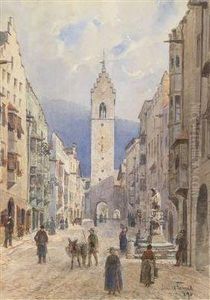Emil Fenzl Paintings
Emil Fenzl was an Austrian botanist born on November 15, 1808, in Vienna. His full name was Eduard Fenzl, but he is often referred to as Emil Fenzl. Not traditionally known as an artist in the conventional sense, Fenzl made significant contributions to the field of botany, which can be viewed in the broader context of the natural sciences as an art form that captures the beauty and complexity of plant life.
Fenzl's career as a botanist was marked by his extensive work on plant classification and systematics. He studied at the University of Vienna, where he developed a keen interest in natural sciences. His dedication and skill in the field led him to become a professor of botany at the university and the director of the Botanical Garden of Vienna. Fenzl was also appointed as the curator of the herbarium at the Imperial Natural History Museum, where he worked on the extensive plant collections.
Throughout his career, Fenzl described numerous new plant species and was involved in the publication of several important botanical works. He was a contemporary of other notable scientists like Joseph Hooker and was involved in the exchange of botanical knowledge and specimens. Fenzl's contributions to botany were recognized by his peers, and he was respected for his meticulous work and expertise in the classification and description of flora.
Fenzl's legacy in botany is reflected in the fact that several plant species have been named in his honor, which is a common practice in the field to acknowledge the contributions of eminent scientists. He passed away on September 28, 1879, in Vienna, leaving behind a rich legacy of scientific inquiry and a body of work that continued to influence the field of botany well beyond his lifetime. While not an 'artist' in the traditional sense of painting or sculpture, Fenzl's scientific illustrations and his role in enhancing our understanding of plant diversity are testament to the artistic dimension of botanical science.
